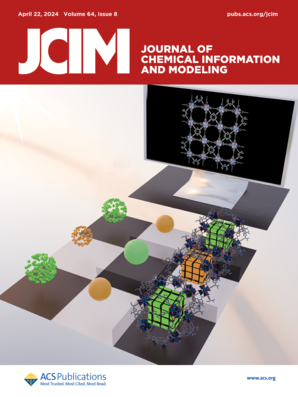A kalihinol analog disrupts apicoplast function and vesicular trafficking in P. falciparum malaria
IF 5.6
2区 化学
Q1 CHEMISTRY, MEDICINAL
引用次数: 0
Abstract
We report the discovery of MED6-189, an analog of the kalihinol family of isocyanoterpene natural products that is effective against drug-sensitive and drug-resistant Plasmodium falciparum strains, blocking both asexual replication and sexual differentiation. In vivo studies using a humanized mouse model of malaria confirm strong efficacy of the compound in animals with no apparent hemolytic activity or toxicity. Complementary chemical, molecular, and genomics analyses revealed that MED6-189 targets the parasite apicoplast and acts by inhibiting lipid biogenesis and cellular trafficking. Genetic analyses revealed that a mutation in PfSec13, which encodes a component of the parasite secretory machinery, reduced susceptibility to the drug. Its high potency, excellent therapeutic profile, and distinctive mode of action make MED6-189 an excellent addition to the antimalarial drug pipeline.
一种卡利霉素类似物可破坏恶性疟原虫疟疾的细胞质功能和囊泡运输功能
我们报告了 MED6-189 的发现,它是异氰基橙皮烯天然产物卡利桧醇家族的一种类似物,对药物敏感和耐药恶性疟原虫菌株有效,能阻断无性复制和有性分化。利用人源化小鼠疟疾模型进行的体内研究证实,该化合物对动物具有很强的疗效,而且没有明显的溶血活性或毒性。互补的化学、分子和基因组学分析表明,MED6-189 以寄生虫顶体为靶标,通过抑制脂质生物生成和细胞贩运发挥作用。基因分析表明,PfSec13(编码寄生虫分泌机制的一个组成部分)的突变降低了对该药物的敏感性。MED6-189 的药效高、治疗效果好、作用方式独特,是抗疟药物中的佼佼者。
本文章由计算机程序翻译,如有差异,请以英文原文为准。
求助全文
约1分钟内获得全文
求助全文
来源期刊
CiteScore
9.80
自引率
10.70%
发文量
529
审稿时长
1.4 months
期刊介绍:
The Journal of Chemical Information and Modeling publishes papers reporting new methodology and/or important applications in the fields of chemical informatics and molecular modeling. Specific topics include the representation and computer-based searching of chemical databases, molecular modeling, computer-aided molecular design of new materials, catalysts, or ligands, development of new computational methods or efficient algorithms for chemical software, and biopharmaceutical chemistry including analyses of biological activity and other issues related to drug discovery.
Astute chemists, computer scientists, and information specialists look to this monthly’s insightful research studies, programming innovations, and software reviews to keep current with advances in this integral, multidisciplinary field.
As a subscriber you’ll stay abreast of database search systems, use of graph theory in chemical problems, substructure search systems, pattern recognition and clustering, analysis of chemical and physical data, molecular modeling, graphics and natural language interfaces, bibliometric and citation analysis, and synthesis design and reactions databases.

 求助内容:
求助内容: 应助结果提醒方式:
应助结果提醒方式:


